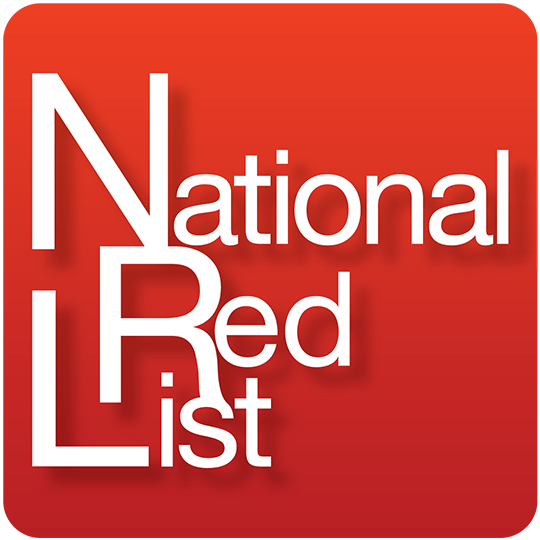Taxon name
Aquila nipalensis
Hodgson, 1833
Uploaded by
National Red List Database
Taxonomic information
Scientific name
Aquila nipalensis
Hodgson, 1833
Assessed taxon level
Species
Higher level taxonomic groupings
Vertebrates
Birds
Species authority
Hodgson, 1833
Location and scope
Specific locality or subnational name or regional name
United Arab Emirates (the)
Scope (of the Assessment)
National
Countries included within the scope of the assessment
United Arab Emirates (the)
Does the assessment cover a marine EEZ area(s)?
Not_assigned
Conservation Status
Assessed as
Critically Endangered
Qualifying criteria (if given)
D
Criteria system used
IUCN
(see Assessment details)
Assessment rationale/justification
This species has an extremely small non-breeding population in the UAE, which qualifies it for listing as Critically Endangered. On a global scale, the species is listed as Endangered due to a rapid population decline. Therefore, breeding populations outside of the country may not have a large rescue effect. The population trend within the country is unknown. Therefore, given the global situation, the species is retained as Critically Endangered at the national level.
Assessment details
Assessors/contributors/reviewers listed
UAE National Red List Workshop
Criteria system used
IUCN
Reference for methods given
IUCN. 2012. IUCN Red List Categories and Criteria: Version 3.1, Second edition. IUCN, Gland, Switzerland and Cambridge, UK. iv + 32pp pp. And IUCN. 2012. Guidelines for Application of IUCN Red List Criteria at Regional and National Levels: Version 4.0. Gland, Switzerland and Cambridge, UK: IUCN. iii + 41pp.
Further information
Endemism (according to assessment)
Endemic to region
Not assigned
Taxon distribution as listed in assessment
This species is an uncommon migrant and winter visitor occurring across the entire UAE, mainly between September and late April (Pedersen et al. 2017). The species was first recorded in the UAE in April 1987 in the northern part of the country (Pedersen et al. 2017).
Is there a map available in assessment?
Yes
Habitat and systems
Ecological system type
Habitat
Habitat details as listed in assessment
This species is found in open habitat like steppe, semi-desert and forestery plantations, often in hilly country and near water, for instance on marshes (Richardson 1990, Aspinall and Porter 2011). It feeds on rodents, lizards and insects, as well as on carrion and at rubbish dumps (Richardson 1990). The species is migratory. Birds passing through the UAE breed in European Russia, eastern Kazakhstan and Turkey and winter in the Middle East, Arabia and east and southern Africa (Meyburg and Boesman 2013). Migrants leave their breeding grounds between August and October, returning between January and May (Ferguson-Lees and Christie 2001). The species avoids sea crossings and thus forms large concentrations at bottleneck sites (del Hoyo et al. 1994, Snow and Perrins 1998, Ferguson-Lees and Christie 2001).
Threats and conservation measures listed
Threats listed in assessment
Within the UAE, development and habitat degradation may be having an impact on the species. The potentially temporary nature of some artificial sites, could impact upon this species too. A reduction in the amount of carrion left out could mean reduced food supplies for this species.The following threats are relevant at the global level, and as such likely impact individuals that pass-through/overwinter in UAE, even if the threats only occur outside of the country. The species has declined in the west of its breeding range, including extirpation from Romania, Moldova and Ukraine, as a result of the conversion of steppes to agricultural land combined with direct persecution (Ferguson-Lees and Christie 2001, Meyburg and Boesman 2013).;It is also adversely affected by power lines and is very highly vulnerable to the impacts of potential wind energy developments (STRIX 2012, Meyburg and Boesman 2013). It was recently found to be the raptor most frequently electrocuted by power lines in a study in western Kazakhstan (Levin and Kurkin 2013). Three sets of factors have been identified as having detrimental impacts on the species in Russia and Kazakhstan: increased mortality owing to collisions with power lines, poisoning and direct persecution; a reduction in the area of suitable habitat and a reduction in available food; poor breeding success owing to destruction of nests and juvenile mortality during spring fires and disturbance by people and livestock (Strategy of the Steppe Eagle Conservation in the Russian Federation 2016). Young eagles are taken out of the nest in order to sell them to western European countries (Mebs and Schmidt 2006). A decline in the number of birds and a reduction in the proportion of juveniles migrating over Eilat, Israel began immediately after the Chernobyl nuclear accident in 1986, leading Yosef and Fornadari (2004) to suggest that the species may have been affected by radioactive contamination. This species is vulnerable to the veterinary drug diclofenac (Sharma et al. 2014), which was intensively used in the species's wintering range in Pakistan and India (M. Horvath in litt. 2016).
History
It is assessed that in 1996, the national Red List status of this species would have been the same as in this assessment.
Publication
Burfield, I.J., Westrip, J., Sheldon, R.D., Hermes, C., Wheatley, H., Smith, D., Harding, K.A. Allen, D.J. and Alshamsi, O. 2021. UAE National Red List of Birds. Ministry of Climate Change and Environment, Dubai, United Arab Emirates
